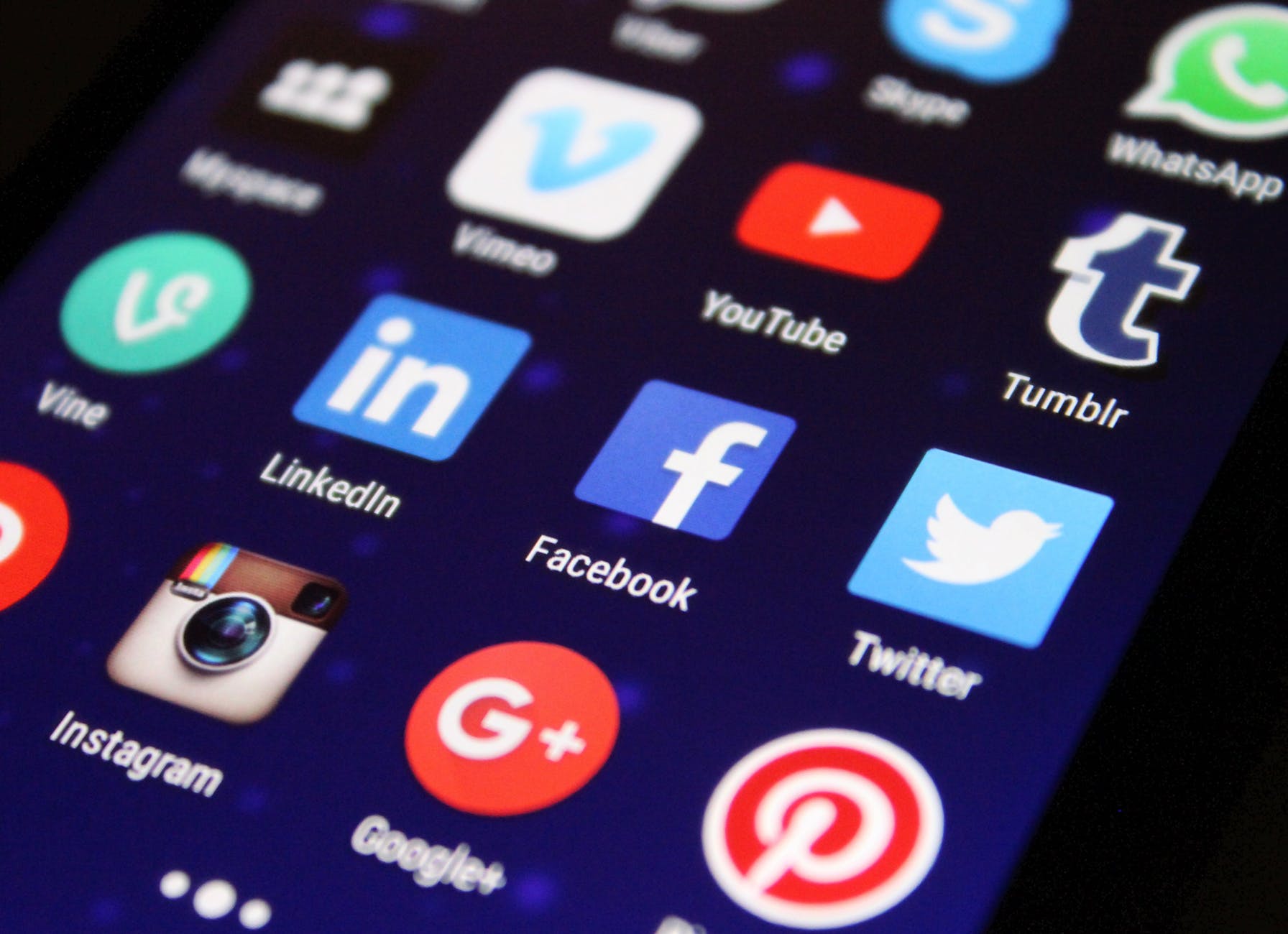
All About Content Creation: How Content Creation Helps Businesses Grow
ALL ABOUT CONTENT CREATION: HOW CONTENT CREATION HELPS BUSINESSES GROW
In today’s uber-competitive business environment, content is king.
Brands that produce fresh, engaging, and relevant content stand out among their competitors.
According to data by HubSpot, 90% of brands plan to continue focusing on content creation in 2022 and beyond. This figure underscores the importance of relevant content in the current and future business landscape.
So, how important is effective content creation?
Content creation has proven to be an incredibly successful option for marketers. Given the significance relevant content has for consumers, brands must use content creation to reach their target audience.
This article will discuss content creation and its role in business growth. Moreover, this article will explore how content creation has gained a foothold in today’s business landscape.
What is content creation?
Content marketing has increasingly become to go-to format brands use to communicate with their target audience. In particular, content creation effectively delivers consistent value to consumers without “selling.”
Best-selling author and entrepreneur Jay Baer offers this thought: “Content is the emotional and informational bridge between commerce and consumer.”
This quote illustrates the significant relationship brands create with their consumers. Building this relationship is possible when brands successfully bridge the gap between themselves and consumers.
Please bear in mind that content creation is not about “selling” anything.
Effective content is not about getting consumers to buy products. Effective content creation is about eliciting an emotional response in consumers.

Think about the ads that brands such as Coca-Cola or Pepsi produce.
These brands focus on the emotional response their products elicit from consumers.
For instance, people who drink Coca-Cola or Pepsi have fun, are happy, and find themselves surrounded by loved ones.
A brand evokes a personal connection when content strikes a chord with consumers. This connection fosters trust.
As brands consistently deliver value, they position themselves in their consumers’ minds. Ultimately, brands may create bonds with consumers that can last a lifetime.
Why is content creation important?
Undoubtedly, successful content can take a brand to the next level. Specifically, there are three key reasons why effective content creation is critical to successful business growth:
1. Promoting Brand Awareness
Brands seek to position themselves in consumers’ minds. However, using catchy slogans and jingles does not always translate into sales. As a result, promoting brand awareness becomes a top priority.
Please remember that brand awareness is not necessarily about placing billboards all over town or hoarding ad space on television. Brand awareness is about creating a positive association between brands and consumers.
Marketing guru Seth Godin offers this thought: “A brand is the set of expectations, memories, stories, and relationships that, taken together, account for a consumer’s decision to choose one product or service over another.”
Indeed, Godin’s contribution underscores the importance of brand awareness: compelling consumers to choose one brand over another.
Successful brands know how to compel consumers to choose them over another. This effect does not require mind control or deceit. It requires communicating the brand’s unique value proposition.
Effective content creation helps communicate value in a way that resonates with the target audience’s specific expectations.
2. Increasing Engagement
Traditional marketing (television, radio, and print) focuses on a one-sided conversation. Consequently, consumers have little to no say in anything the brand does to meet their expectations. This type of advertising leaves plenty of room for brands to get it wrong.
How so?
One-sided marketing does not allow consumers to voice their opinions about the product or the brand itself. As a result, the brand must directly approach consumers to find out their expectations, wants, and needs.
This situation changes dramatically with engaging content creation.
New channels such as social media enable brands to maintain two-way communication with their consumers.
Consequently, brands receive direct input from consumers.
Brands now have the opportunity to make quick adjustments to meet their target audience’s needs and expectations.

This ongoing dialog is possible thanks to engaging content.
3. Boosting Sales
Indeed, the ultimate goal is to boost sales. But please note this is not merely about making money. It is about delivering value while turning a profit.
Without profits, brands and their unique value propositions would cease to exist.
Engaging content creation facilitates consumers’ purchasing decisions. Amid the sea of alternatives, creative and effective content creation allows them to separate the wheat from the chaff.
In other words, sales climb as consumers’ brand perception reflects a specific set of values and a vision.
Brand expert Simon Mainwaring offers this highly interesting contribution: “Define what your brand stands for, its core values, and tone of voice, and then communicate consistently in those terms.”
Boosting sales hinges on consistently communicating a brand’s message throughout its interaction with consumers.
Consistency builds trust in consumers’ minds. And trust is the treasured commodity that ultimately sways consumers’ purchasing decisions in favor of one brand or another.
What kind of content do growing businesses need?
Businesses focused on growth need content. However, it must not be content for the sake of content.
Producing irrelevant content can do far more harm than good.
Content that fails to resonate with consumers can lead to a disconnect between brand and consumer. Moreover, consumers may be unclear about the brand’s values and vision.
Brands must, therefore, strive to produce content that is relevant, useful, and delivers value at all times.
Here are three key content types that brands must consider to foster engagement and drive revenue:
Blogs
On the surface, blogs may seem old-fashioned. This perception stems from social media’s predominance, particularly among younger demographics.
Nevertheless, blogging holds a significant foothold among relevant content across the board.
Consider the following figures:
- 77% of online users read some type of blog.
- 77.2% of long-form blogging produces more links than short-form ones.
- 74% of companies report that content creation has increased the volume and quality of their sales leads.
- 65% of business-to-business customers report that their vendors’ websites are the most influential source of information.
- 73% of marketers indicate that effective content creation allows them to nurture their leads. In comparison, 64% indicate that content creation enables them to generate increased sales and revenue.
Based on these data, it is evident that blogs represent a powerful means for brands to maintain close communication with their consumers. An informative and relevant blog can increase traffic, drive sales, and boost overall revenue.
Videos
Videos are a particularly effective means of engaging younger audiences.

Attractive visuals are often a great way in which brands can interact with their consumers.
For instance, YouTube is a highly engaging video streaming platform that enables two-way communication.
Consumers can leave their comments, suggestions, and opinions about any number of issues.
Is video content truly that effective? Consider these figures:
- According to Statista, over three billion online users were consuming some type of video content in 2020.
- Video content has an overall reach of 92% of users worldwide.
- 47% of global brands produce how-to videos, while 41% develop social ads.
These figures make video content hard to ignore.
Nevertheless, the biggest challenge facing brands is compelling content that engages and reaches audiences effectively. There is, consequently, growing demand for adept content creators that can tailor content to suit consumers’ needs.
Infographics
Infographics are predominantly visually based content creation strategies. They allow consumers to digest a large amount of information in a condensed format. As a result, consumers can easily get large data sets without having to go through extensive research and reading.
Here are some interesting points on infographics:
- A study revealed that 82% of test participants’ attention spans increased due to the use of infographics.
- In general, people are 39% likelier to remember information when using a colorful and visually attractive format.
- Readers are 80% likelier to remember information in documents using color than black-and-white ones.
Indeed, colorful and visually appealing graphics are incredibly effective in engaging consumers.
Nevertheless, infographics are useless if the information they contain does not resonate with the target audience.
Consequently, brands must present compelling and useful information with attractive visuals. This combination makes infographics a highly successful communication device between brands and consumers.
How can a ghostwriting agency help brands boost their content creation strategies?
Producing high-quality content requires compelling prose, systematic research, and speaking the target audience’s language.
Without these elements, producing content that truly resonates with audiences can be difficult.
Brands face a considerable challenge as they may not always have a dedicated content creation team on staff.
Moreover, they may lack expert writers able to produce top-notch content within a short turnaround time.

So, what can brands do to ensure producing high-level content in a short timeframe?
Brands can employ a ghostwriting agency to tackle writing engaging content. Here is a list of what a ghostwriting agency can do for brands looking to produce top-quality content:
- Short and long-form blog posts
- Articles and whitepapers on various topics
- How-to guides
- E-books and handbooks
- User manuals and technical documentation
- Research and text for infographics
- Video scripts
- General marketing copy
- Website materials
- Product information
- FAQ and data sheets
These materials are a sample of what a ghostwriting agency can do for any brand’s content creation strategies. As a result, a professional ghostwriting agency produces content that allows brands to provide worthwhile content, leading to a personal connection between brands and consumers.
What are the benefits of employing a ghostwriting agency?
There are three key benefits brands can expect when employing a ghostwriting agency to produce their content:
1. Hiring a ghostwriting agency saves time.
Even when companies have a dedicated marketing staff, producing high-quality content can become a time-consuming proposition.
There are research, writing, editing, and publishing tasks that often intersect simultaneously. As such, marketing professionals often need a helping hand to produce high-quality content in a timely manner.
A ghostwriting agency can step in at any time to help take the burden off overworked marketing staff.
Some brands may look to avoid overwhelming their marketing staff with content creation tasks. As a result, these brands may look to a trusted ghostwriting agency to help them produce high-level content in a fraction of the time.
Please remember that professional ghostwriting agencies employ experienced and vetted writers. These writers have backgrounds and expertise that enable brands to meet their marketing objectives.
2. Hiring a ghostwriting agency saves money.
A common misconception is that hiring a ghostwriting agency is more expensive than employing full-time marketing staff. This idea could not be farther from the truth.

In the long run, employing a professional ghostwriting agency is much more cost-effective.
The savings in hiring full-time staff (salary, benefits, insurance, and taxes) outweighs the expense incurred in employing a ghostwriting agency.
Additionally, the cost-benefit relationship between a ghostwriting agency and the content it produces easily tilts the scales in favor of hiring a ghostwriting agency.
3. Hiring a ghostwriting agency provides maximum flexibility.
A ghostwriting agency is a team of writers. Therefore, a professional cadre of content creators offers maximum flexibility.
Brands can opt for an overarching content creation strategy encompassing several media such as books, ads, videos, blogs, podcasts, and so on when they employ a ghostwriting agency.
Employing a ghostwriting agency allows brands to shift strategies as needed.
When customer perceptions and priorities change, brands can easily request their chosen ghostwriting agency to produce the content consumers demand. With a full-time, in-house marketing staff, these shifts are quite complicated.
One Last Thought
Hiring a ghostwriting agency might not be the first thing that comes to marketing experts’ minds. In fact, some marketers may feel threatened by the idea of hiring a ghostwriting agency.
However, there is no need to feel apprehensive about it. A professional ghostwriting agency strives to become a trusted partner in a brand’s overall marketing strategy.
A trusted ghostwriting agency is like any other valued member and contributor. Ultimately, choosing to work with a trusted ghostwriting agency may become one of the savviest business decisions any brand can make.
Related Content
- 0 Comment
Subscribe to Newsletter
- How Can SharePoint Be Used To Organize and Disseminate SOPs?
- Planning the Perfect Genealogy Research Trip: A Step-by-Step Guide
- From Silly to Awesome: How Words Change Meaning Over Time
- The Psychology of Font Choice: How Typography Impacts Content Engagement
- How to Distribute SOPs for Maximum Usability






